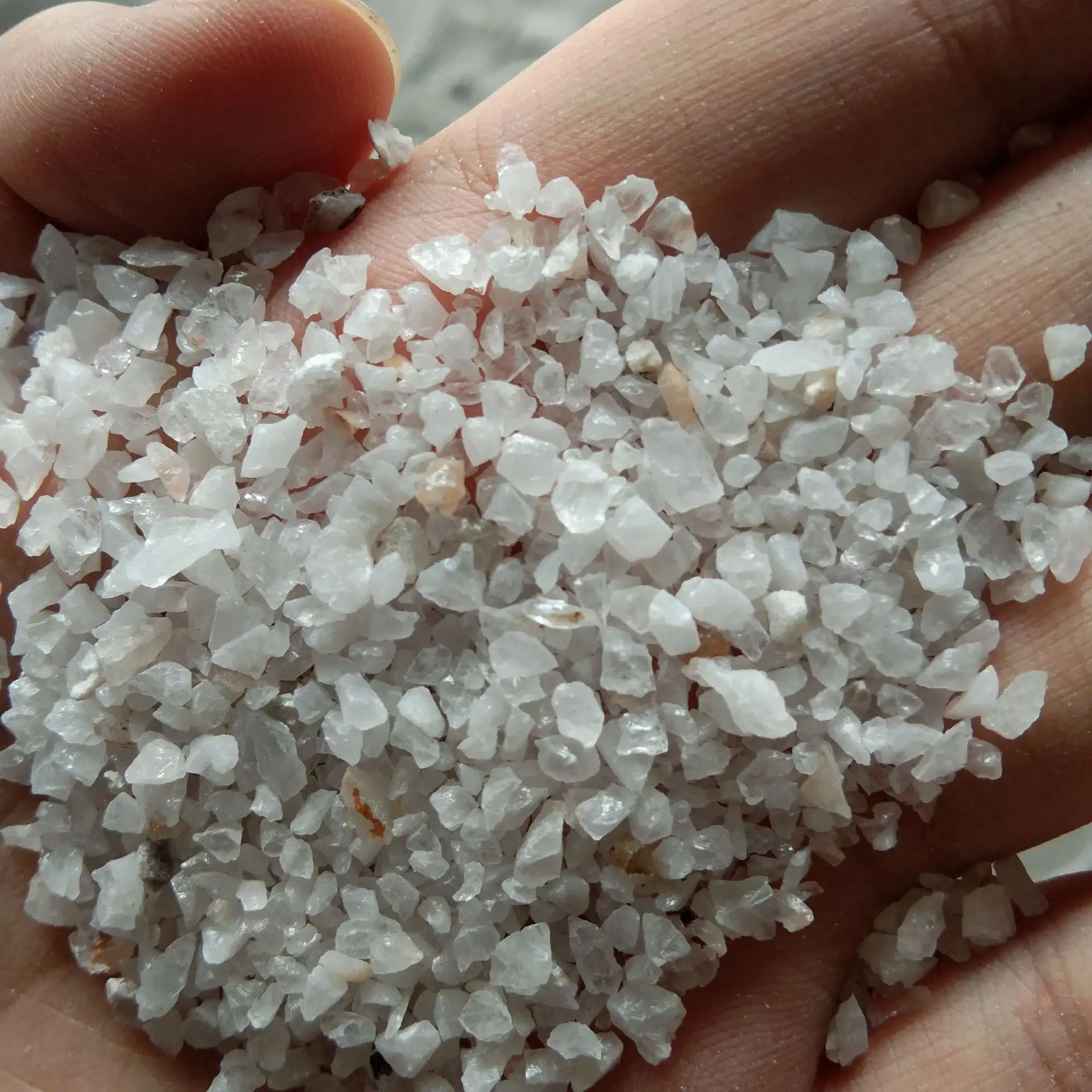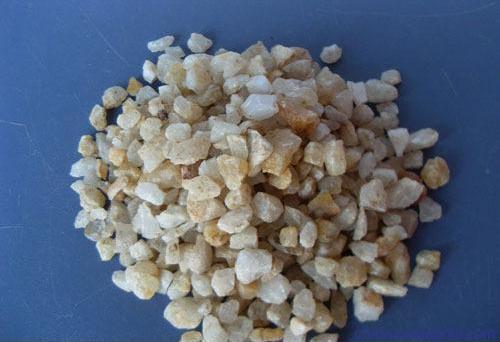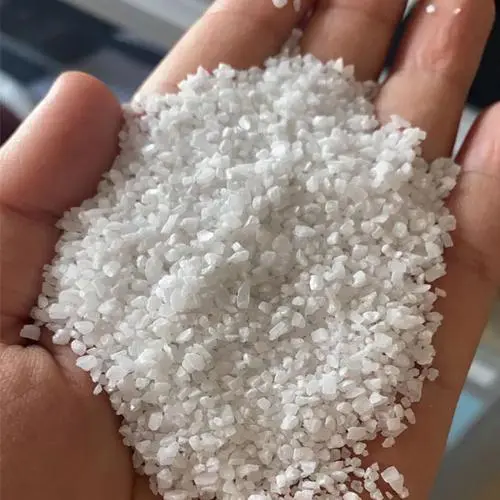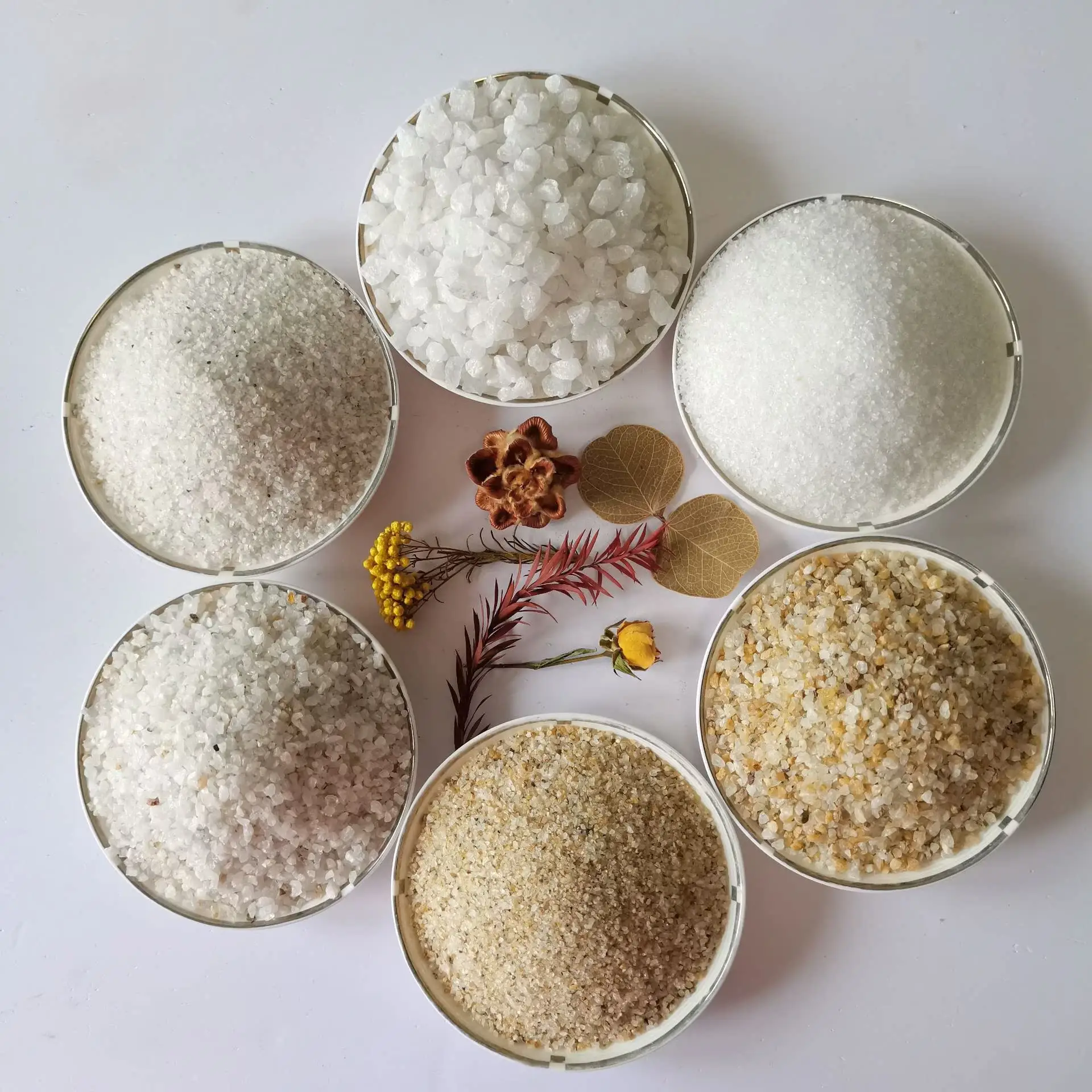
Quartz sand is quartz particles formed by crushing and processing of quartz stone
Quartz sand, also known as silica sand, is a form of quartz particles that are formed through the crushing and processing of quartz stone. Quartz stone itself is a non-metallic mineral that is known for its hardness, wear-resistance, and chemical stability. It is a type of silicate mineral that is mainly composed of silicon dioxide (SiO2). The color of quartz sand is typically milky white or colorless translucent, and it has a Mohs hardness rating of 7, making it a relatively hard material. Quartz sand is widely used in various industries due to its unique properties and versatile applications.

One of the primary uses of quartz sand is in the production of glass. Quartz sand serves as the main component in the manufacturing of glass products, providing transparency and strength to the final product. The high silica content of quartz sand ensures the stability and durability of the glass, making it suitable for use in windows, mirrors, and other optical devices. Moreover, quartz sand is also used in the production of ceramics and porcelain, as it enhances the toughness and resistance of these materials.

In addition to glass and ceramics, quartz sand has various other industrial applications as well. It is extensively used in the construction industry as a key ingredient in the production of concrete and mortar. The presence of quartz sand in these building materials improves their strength and durability, ensuring that structures can withstand external forces and harsh weather conditions. Quartz sand also serves as a filler material in the manufacturing of paints, coatings, and adhesives, providing stability and texture to the final products.
Another significant application of quartz sand is in the field of water filtration. Due to its high hardness and uniform particle size, quartz sand is used as a filter media in the treatment of both drinking water and wastewater. It effectively removes suspended solids, turbidity, and other impurities, ensuring the water is clean and safe for consumption or discharge. The chemical stability of quartz sand also makes it resistant to corrosion, enabling it to be used in various water treatment processes.

Apart from its industrial uses, quartz sand also finds applications in the production of jewelry and decorative items. Its unique properties, such as transparency and hardness, make it a popular choice for gemstones and beads. Quartz sand can be cut and polished into beautiful gemstones like amethyst, citrine, and rose quartz, which are widely used in jewelry making. Additionally, its natural milky white or colorless translucent appearance makes it a preferred material for decorative items such as vases, countertops, and flooring.

In conclusion, quartz sand is a versatile material that is widely used in various industries due to its unique properties and wide range of applications. From being a key ingredient in the production of glass and ceramics to serving as a filler material in paints and adhesives, quartz sand plays a crucial role in many manufacturing processes. Its use in the construction industry and water treatment also highlights its importance in ensuring the strength and safety of structures and providing clean and safe water. Moreover, the beauty and hardness of quartz sand make it a popular choice for jewelry and decorative items. Overall, quartz sand is an essential mineral that contributes significantly to the development and progress of multiple industries.
Share
-
Chlorolite is obtained from zeolite ore by high temperature sintering and dehydration treatment.NewsMay.24,2024
-
The main component of talc is magnesium silicate containing talc water,NewsMay.22,2024
-
Alumina is a high-hardness compound commonly used in the manufacture of refractory materials.NewsMay.20,2024
-
Hollow glass beads are tiny, hollow glass spheres,NewsMay.16,2024
-
Fused quartz is the amorphous (glassy) state of silicon oxide (quartz, silica).NewsMay.09,2024
-
Vermiculite is a natural, inorganic, non-toxic mineral that expands under high temperature.NewsApr.09,2024






